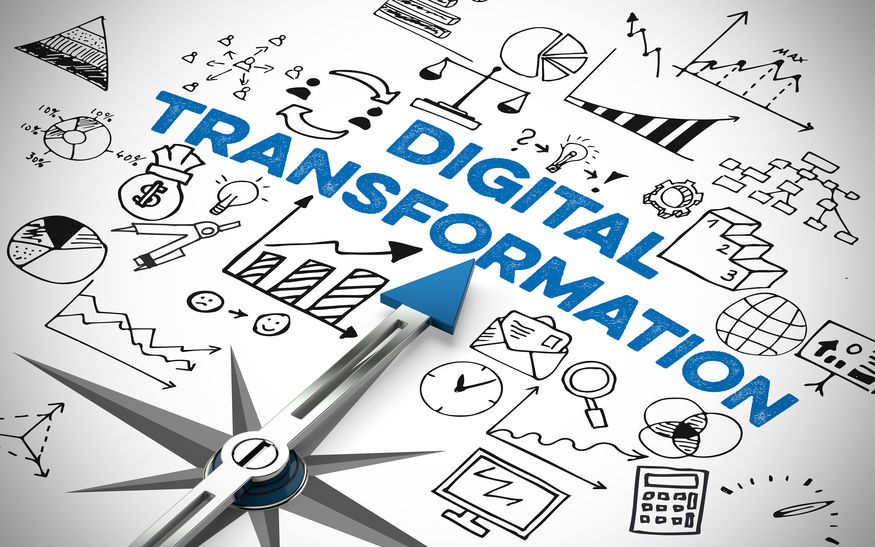Current: Global Trends
All latest business trends and surveys

UNCTAD: Pandemic Alters Shopping Patterns Forever
The COVID-19 pandemic has forever changed online shopping behaviours, according to a survey of about 3,700 consumers in nine emerging and developed economies.
The survey, entitled “COVID-19 and E-commerce”, examined how the pandemic has changed the way consumers use e-commerce and digital solutions. It covered Brazil, China, Germany, Italy, the Republic of Korea, Russian Federation, South Africa, Switzerland and Turkey.
Following the pandemic, more than half of the survey’s respondents now shop online more frequently and rely on the internet more for news, health-related information and digital entertainment.
Consumers in emerging economies have made the greatest shift to online shopping, the survey shows.
“The COVID-19 pandemic has accelerated the shift towards a more digital world. The changes we make now will have lasting effects as the world economy begins to recover,” said UNCTAD Secretary-General Mukhisa Kituyi.
He said the acceleration of online shopping globally underscores the urgency of ensuring all countries can seize the opportunities offered by digitalisation as the world moves from pandemic response to recovery.
Online purchases rise but consumer spending falls
The survey conducted by UNCTAD and Netcomm Suisse eCommerce Association, in collaboration with the Brazilian Network Information Center (NIC.br) and Inveon, shows that online purchases have increased by 6 to 10 percentage points across most product categories.
The biggest gainers are ICT/electronics, gardening/do-it-yourself, pharmaceuticals, education, furniture/household products and cosmetics/personal care categories (Figure 1).

Figure 1: Percentage of online shoppers making at least one online purchase every two months
However, the average online monthly spending per shopper has dropped markedly (Figure 2). Consumers in both emerging and developed economies have postponed larger expenditures, with those in emerging economies focusing more on essential products.
Tourism and travel sectors have suffered the strongest decline, with average spending per online shopper dropping by 75%.
Figure 2: Fall of average online spending per month since COVID-19, per product category
The survey found that women and people with tertiary education increased their online purchases more than others. People aged 25 to 44 reported a stronger increase compared with younger ones. In the case of Brazil, the increase was highest among the most vulnerable population and women.
“Companies that put e-commerce at the heart of their business strategies are prepared for the post-COVID-19 era,” said Yomi Kastro, founder and CEO of Inveon. “There is an enormous opportunity for industries that are more used to physical shopping, such as fast-moving consumer goods and pharmaceuticals.”
“In the post-COVID-19 world, the unparalleled growth of e-commerce will disrupt national and international retail frameworks,” said Carlo Terreni, President, NetComm Suisse eCommerce Association.
“This is why policymakers should adopt concrete measures to facilitate e-commerce adoption among small and medium enterprises, create specialised talent pools and attract international e-commerce investors.”

No More Buffering
Pace of digital transformation accelerates
A global survey of 700 CIOs in large enterprises with over 1,000 employees, conducted by Vanson Bourne and commissioned by Dynatrace, found that over the past 12 months, the majority of CIOs (89%) say their digital transformation has accelerated, and 58% say it will continue to speed up.
Dell’s latest Digital Transformation Index has reported that the coronavirus pandemic is accelerating digital transformation across the globe. However, Dell found that 94% of organisations in the UK are facing entrenched barriers to transformation. Lack of budget is the main barrier preventing organisations from fulfilling their digital transformation objectives.
The benchmark, based on a global survey of 4,300 business leaders, was conducted in July and August of 2020 by independent research company Vanson Bourne. They found that prior to the pandemic, business investments were strongly focused on foundational technologies, rather than emerging technologies.
The vast majority in the UK, 89%, recognise that as a result of disruption this year, they need a more agile and scalable IT infrastructure to allow for contingencies.
Adrian McDonald, EMEA president of Dell Technologies, said that the coronavirus pandemic has led to permanent changes in the business.
“Business models that were successful before COVID-19 became fundamentally more successful after COVID-19,” he said. “However, companies that had challenging business models prior to COVID-19 have experienced greater challenges.”
Another study, from HP, which looked specifically at the opportunities to digitise manufacturing, reported that the majority of business decision-makers (77%) are looking to transform their business models over the next 12 months.
The Digital Manufacturing Trends report from HP found that 99% of respondents believe that digital manufacturing technologies can lead to economic growth and 90% are looking to evolve their business models because of the current world business environment. HP also reported that 92% of respondents said they are investigating new production and supply chain models, with 51% localised production and hybrid models, and 42% distributed supply chain.
In terms of the types of technologies business leaders are betting on, the Dell Digital Transformation Index reported that 78% of UK respondents believe an increase in the use of augmented reality (AR) will accelerate the speed with which staff learn how to repair things; 81% foresee organisations using artificial intelligence (AI) and data models to predict potential disruptions, and 70% predict distributed ledgers – such as Blockchain – will make the gig economy fairer, by cutting out the intermediary.
However, Dell reported that only 10% are planning to invest in Virtual/Augmented Reality, just 28% intend to invest in AI and only 11% said they plan to invest in distributed ledgers in the next one to three years.
From an IT management perspective, analyst Forrester predicted that cloud-native technology will continue to power digital transformation strategies. In its Predictions 2021: Cloud Computing report, Forrester predicted that by the end of next year, 60% of companies will be using containers on public cloud platforms and 25% of developers will be making use of serverless architectures.
Digital transformation puts greater emphasis on merged IT systems and the use of new and emerging technologies like augmented reality, the use of AI for predictive analytics and additive manufacturing. As Forrester has found, organisations are increasingly turning to the public cloud, to build cloud-native infrastructure to support new digital transformation initiatives.
Undoubtedly, IT departments are going to be asked to do more to help organisations – making the best use of whatever technology can offer – to stimulate business recovery and growth opportunities.
There is a business case for embedding AI-powered automation in IT to manage the extra workload more efficiently. In fact, Dynatrace’s study reported that 93% of CIOs think AI-assistance will be critical to IT’s ability to cope with increasing workloads and deliver maximum value to the business.

Survey: 60% of Businesses Altered Digital Transformation Plans Due to COVID-19
For years, businesses have invested in digital transformation initiatives such as analytics, social media, and automation. In the wake of the global COVID-19 pandemic, many enterprises are reallocating budget dollars and resources to different digital transformation projects.
ZDNet's sister site TechRepublic Premium conducted a survey in 2020 to discover just how tech leaders are reimagining business in the digital age, and COVID-19's impact on those future objectives.
According to 60% of respondents, COVID-19 forced them to alter their digital transformation plans. For example, since COVID-19 began, 65% said they were using technologies to enable communications and collaboration between remote employees, while 56% cited an increased focus on digital tools to facilitate digital training.
In a similar TechRepublic Premium survey from 2018, the majority of respondents (68%) reported eliminating paper through digitisation, and 54% implemented online training. These initiatives remain in 2020, albeit, with a slight reduction. In 2020, 58% of respondents reported digitising paper, and 45% used online training tools.
Finding budget dollars for digital transformation is a perennial challenge. In 2020, 54% cited this as their organization's biggest digital transformation challenge; in 2018, funding ranked as a challenge for 45% of respondents.
We can expect upcoming budget plans to reflect the impact of COVID-19, as 47% of respondents plan to spend more on digital transformation in 2021 than in 2020. Only 13% of survey respondents foresee their company budgets for digital transformation to stay the same, and 2% anticipate spending on digital tech to decrease. In other cases, the uncertainty of COVID-19 leads to uncertainty over tech spends, as 31% of respondents do not know what their companies will spend on digital transformation.

Data is Fuel, 5G Fabric for Digital Transformation: Michael Dell
Reiterating that technology has never been more central than it is in the pandemic times, Dell Technologies chairman and CEO Michael Dell has said digital transformation is like a machine with data as its fuel and 5G as its digital fabric.
Announcing the new Project Apex as-a-service offering, Michael Dell said that as we talk about the digital transformation, “my hope is that we are also seeing a human transformation with more kindness, generosity, and empathy.”
“We are going to need all of that kindness and generosity and empathy going forward to help bridge these divides and make good on the promise of a brighter future.”
In a bid to help customers and partners on their digital transformation journey in the pandemic times, Dell Technologies announced a Cloud Console that will provide customers with a single interface to manage multi-cloud, on-premise and edge deployments.
The Cloud Console is part of a new “Project Apex” as-a-service strategy that aims to simplify how customers access Dell’s capabilities across storage, servers, networking, hyper-converged infrastructure, PCs and architectural offerings.
“We are committed to delivering all of our products and solutions as a service in an effort we’re calling Project Apex; so you can consume solutions, any way you want, pay-as-you-use, pay-as-you-go or subscription,” the Dell Technologies CEO concluded.

Fourth Industrial Revolution: From Buzzword to Reality
The Fourth Industrial Revolution has been met with both enthusiasm and fence-sitting. While sentiments and experiences have been mixed, most business leaders are now approaching 4IR with a sense of measured optimism.
While they recognise the potential value and business boost advanced manufacturing technologies can present – particularly robotics, the industrial internet of things (IIoT), cloud computing, advanced analytics, 3D printing, virtual and augmented reality – they are still deliberating how and where to invest and balancing the hype with their own level of preparedness.
Meanwhile, they’re also well aware of the significant changes 4IR will bring to a new manufacturing workforce – one that is increasingly becoming a hybrid of human and machine.
PwC and The Manufacturing Institute (the workforce and thought leadership arm of the US National Association of Manufacturers), surveyed approximately 100 US-based manufacturers.
Looking at the results, we see a definitive – and, indeed, inevitable – shift to 4IR as companies seek to integrate new technologies into their operations, supply chain and product portfolio.
However, these companies acknowledge that scaling, justifying 4IR investments and dealing with uncertainty surrounding use cases and applications present a new set of challenges.
Key 4IR Survey Findings:
.jpg)







.jpg)